Invisible Nation
Families represent 37 percent of today's homeless population. Entire families live in the streets, in cars, in temporary shelters and in single motel rooms. A new book examines family homelessness in five American cities.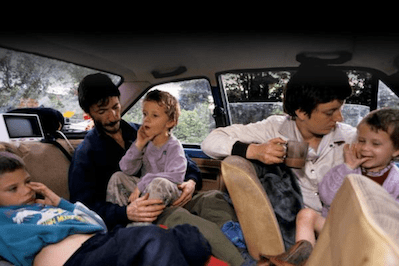
“Invisible Nation: Homeless Families in America” A book by Richard Schweid
About a quarter century ago, I taught a film course at UC San Diego. I drove from my home in Los Angeles once a week, returning the same day after my evening class. After one class session, some students requested to see me the next morning because they were unable to make my late afternoon office hours before class. I consented and stayed in San Diego that night.
Failing to find any local friends at that hour, I looked for an inexpensive motel. The clerk at a relatively nearby dump stood behind a glass partition and handed me the room key after I paid the cash-only daily rate. He sternly informed me that no visitors were allowed. The room smelled of cigarettes and looked extremely unappealing. The carpet was filthy and deeply stained. I never removed my socks the entire night. The foul smelling bathroom sink was also stained. I slept fitfully on the threadbare, unwashed sheets and kept the bathroom light on all night. At 6 a.m., I rose and left, feeling as though I had been released from jail.
Richard Schweid’s remarkable and disconcerting new book, “Invisible Nation: Homeless Families in America,” brought back my unpleasant San Diego motel memory. This exceptional work of journalism chronicles the lives of America’s homeless families, focusing dramatically on the plight of the thousands of homeless children, many living for protracted periods in motels eerily similar to my dreadful San Diego “fleabag.” Schweid traveled through a nation that privileged Americans generally try to avoid and deny. These more fortunate Americans are embarrassed, indifferent and sometimes actively hostile to the desperate plight of their hidden neighbors. Schweid’s book is a compelling account of his findings.
Throughout much of the 20th century, the homeless in America consisted primarily of men, often wandering from location to location. As late as 1980, families comprised only 1 percent of the homeless population. That number is now 37 percent, not only a huge increase, but a national catastrophe. Entire families now live in the streets, in cars, in temporary shelters, and often in one miserable motel room, waiting for some permanent relief in the form of a stable apartment. Schweid examined family homelessness in five U.S. cities: Nashville, Tennessee; Boston; Fairfax, Virginia; Portland, Oregon; and Trenton, New Jersey. He lived in the motels he described and listened carefully to the families’ stories, the basis for his grim observations and conclusions.
The accounts of family motel stays are the most dramatic feature of the book. Single mothers (and sometimes fathers) with one or more children are greeted by mildewed shower curtains, cigarette stains and lingering odors, cracked mirrors, stained rugs and sheets (often with holes) and other physical indignities, including roaches. Young boys and girls eat only what can be cooked in motel room microwaves and hot plates, often subsisting on the unhealthy fast food options from nearby restaurants and convenience stores. A lack of refrigerator space ensures that sugary beverages and precooked lunchmeats are common; fresh fruits and vegetables are rare or nonexistent in most of these motel settings.
Especially in cold weather states, children can play only in motel corridors, often encountering unsavory residents and visitors with criminal and drug histories and involvements. The children usually wait in these corridors for buses to transport them to schools, which they change with devastating regularity as their families move from motels to shelters and other temporary housing facilities.
All too regularly, families are evicted from these barely habitable motel rooms, invariably for not paying the (exorbitant) rent. Typically, they are locked out and lose their meager possessions. Schweid makes the point with heartbreaking poignancy: “Children’s toys and favorite things were gone forever. Anyone who has ever watched a young child form an attachment to some beat-up raggedy doll, some scrap of material … will understand that its sudden overnight loss may generate terrible anxiety.”
The results are distressingly predictable. Children residing in these motels (and shelters) frequently act out in school and perform poorly. Physically, they suffer from a multitude of ailments, including ear infections, asthma, skin disorders, dental decay, obesity, depression and many others. Some of these are serious and chronic, and can have lifelong detrimental effects. Failure to address childhood dental problems, for example, often leads to massive tooth loss, gastrointestinal disorders and emotional trauma, among other consequences.
“Invisible Nation” also addresses the plight of homeless families in shelters, many run by local governments and sometimes assisted by churches and other charitable organizations. With minor variations, these shelters are the same in all five cities where Schweid conducted his investigations. The chief difference between shelters and motel rooms is that shelter food is generally better, and sanitary facilities like showers and toilets are generally superior. But privacy is conspicuously lacking, causing even greater stress to homeless parents and children.
A debilitating feature of many of these shelters, moreover, is that their temporary inhabitants must exit the premises early in the morning, forcing them out to the mean urban streets. In Boston, Fairfax, Trenton and Nashville, they can face freezing winter temperatures, while in Portland, they can encounter relentless winter rains. The shelters also impose strict, even punitive rules and regulations, further oppressing the temporary residents. These settings are understandably places of last resort for homeless families, who often have no relatives or friends with whom they can stay.One of the most valuable features of this book is how the author juxtaposes his contemporary reporting with the pre-American Revolution treatment of America’s destitute population. He addresses the sorry history of almshouses, variously known as workhouses and poorhouses. Local governments created these establishments to house desperately poor people, often immigrants, children, and the elderly. The prevailing dogma was simple: Place them in one setting and spend as little as possible — an early expression of the low tax/low expenditure pathology that has crippled public policy for decades. More established and privileged taxpayers resented having to pay for people they regarded as lazy and prone to bad personal habits that kept them from productive labor.
Little has changed over the centuries. This blame-the-victim ideology still pervades American life. From Ronald Reagan’s racist “welfare queen” rhetoric to Bill Clinton’s cynical “welfare reforms” to widespread contemporary notions that the homeless are homeless solely because of personal failings, this nation has regularly failed to address the structural inequalities of wealth and power since its inception. Today’s shelters are merely the dismal successors to historical almshouses.
Even worse was the appalling historical treatment of indigent children. As early as the 17th century, impoverished children of both genders, some as young as 5 or 6, were sent to foster homes as indentured workers and “apprentices.” As the author compellingly details, this foster care often subjected hundreds of thousands or more to harsh treatment that originated the disgraceful legacy of American child labor. This arrangement was akin to slavery with the only exception that it lacked the formal token of legal property ownership — an irrelevant detail that scarcely affected the children’s quality of life.
Merely a century ago, child labor was an accepted feature of U.S. industrial life. Thousands of children worked in dangerous mills and mines, sometimes suffering debilitating injuries and even death. Regarded as “miniature adults,” they worked for paltry wages as they struggled to contribute to their family’s income. Attempts to ameliorate these grotesque conditions faltered when reformers encountered massive corporate power and their enablers among conservative lawyers and judges. Lewis Hine’s crusading photography, which documented the horrific conditions of children in the workplace, eventually helped catalyze public opinion and led to strict laws against child labor.
The final chapter in “Invisible Nation” offers some cogent observations about the homeless crisis that shows no sign of abating, despite the rhetorical posturing of politicians and the seemingly endless commissions and academic studies. Schweid identifies a central barrier: the large segment of the U.S. population that believes that public assistance, including creating new housing, encourages laziness among the poor, discourages their will to seek employment, and only increases their propensities for drugs and crime. This is a transparent rationalization for inaction and an abominable cover for racism and class oppression.
As long as this repressive ideology prevails, it matters little whether the homeless need housing or services first, or some combination. Clearly a wide range of programs are necessary, starting with decent housing, job training, physical and mental health care, and everything else a genuinely civilized culture should guarantee its entire population. It is foolish to argue whether America is great, whether it needs to become great, or needs to become even greater. With its appalling 2.5 million homeless children and millions more adults, the country remains a moral cesspool.
For all his exemplary reportage and justifiable moral outrage, Schweid concludes with a questionable premise: “While policy choices often reflect political affiliations this is not really a political issue.” That view confuses politics with the partisan conflicts that dominate the American two-party electoral system. But poverty and homelessness are structurally political, and go far beyond these partisan bickerings. They reflect the fundamental inequalities of wealth in the United States and the institutional racism that are inextricably linked to corporate capitalist domination of the economy, of society, and of power relationships generally.
Democratic and Republican quarrels and moral indignation alone cannot solve those structural disorders. Still, the latter is a huge precondition for massive transformation in the long-term quest for a society where all people may live dignified lives. “Invisible Nation” moves us, however modestly, in that direction.
Your support matters…Independent journalism is under threat and overshadowed by heavily funded mainstream media.
You can help level the playing field. Become a member.
Your tax-deductible contribution keeps us digging beneath the headlines to give you thought-provoking, investigative reporting and analysis that unearths what's really happening- without compromise.
Give today to support our courageous, independent journalists.
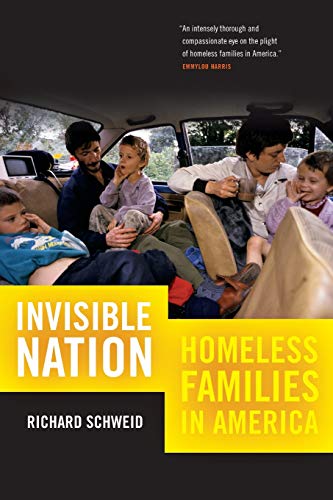
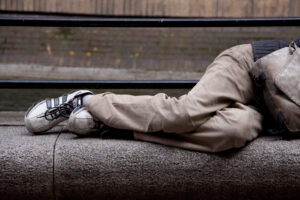
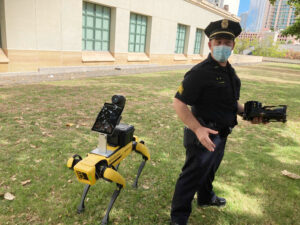

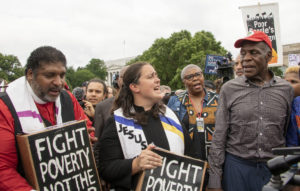

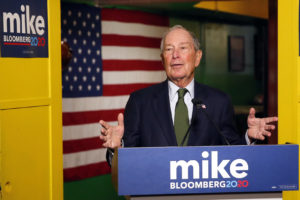
You need to be a supporter to comment.
There are currently no responses to this article.
Be the first to respond.